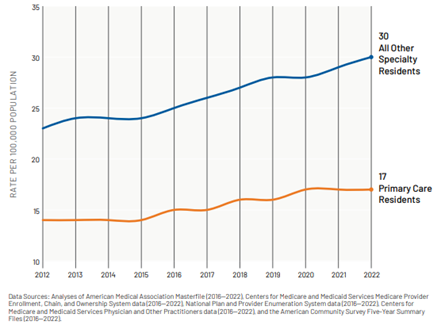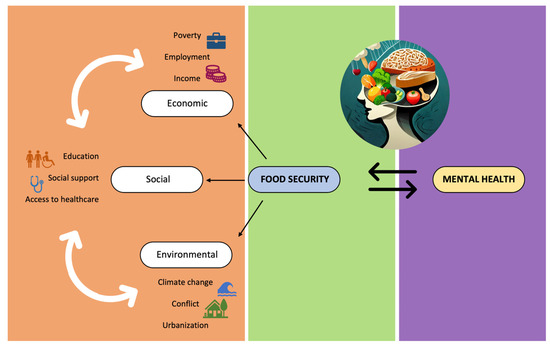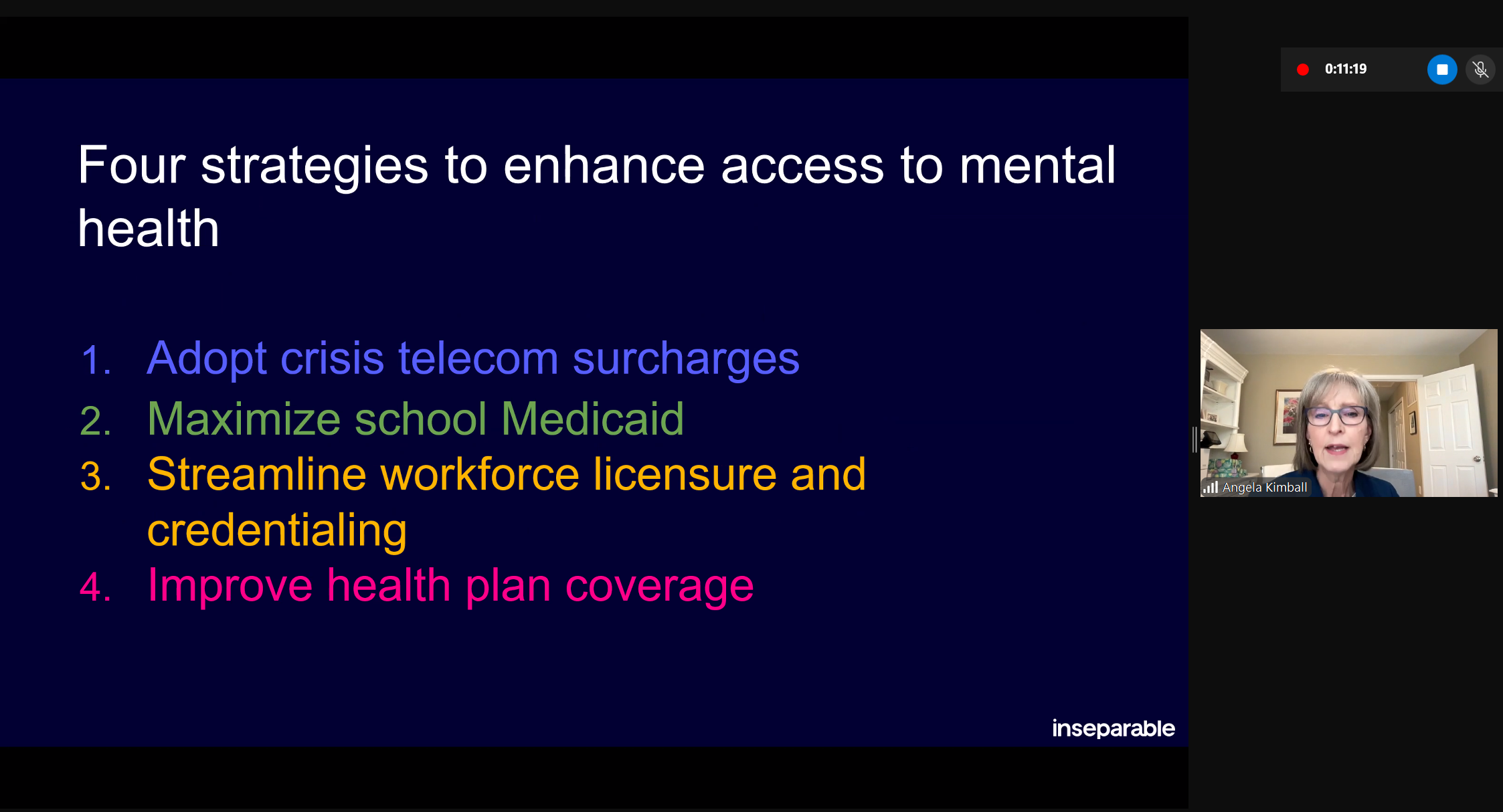The Honorable Patty Murray
Chair
Senate Committee on Appropriations
Capitol Building S-146A
Washington, D.C. 20510
The Honorable Susan Collins
Vice Chair
Senate Committee on Appropriations
Capitol Building S-128
Washington, D.C. 20510
The Honorable Tom Cole
Chair
House Committee on Appropriations Capitol
Building H-307
Washington, D.C. 20515
The Honorable Rosa DeLauro
Ranking Member
House Committee on Appropriations
1036 Longworth House Office Building
Washington, D.C. 20515
Dear Chair Murray, Chair Cole, Vice Chair Collins, and Ranking Member DeLauro:
As co-chairs of the National Governors Association’s Public Health and Disaster Response Task Force, we welcome the opportunity to provide our priorities as your committees develop the Fiscal Year 2025 (FY25) appropriations bills.
The NGA utilizes a task force structure to ensure a more streamlined, Governor-driven approach to formulate and execute on federal policy matters that are priorities to Governors. The three task forces: Education, Workforce and Community Investment; Public Health and Disaster Response; and Economic Development and Revitalization, work in a bipartisan fashion to coordinate NGA’s work on federal policy issues.
Our bipartisan task force has jurisdiction over health, disaster response, and homeland security. The health portfolio includes oversight over healthcare, human services, nutrition, and public health infrastructure. Our disaster response and homeland security portfolio oversees national security, emergency management and recovery, National Guard, defense, cybersecurity, and emerging threats mitigation.
On behalf of the NGA, we respectfully request prioritization of the following funding efforts:
Public Health
Behavioral Health:
- Recent data indicates one-third of youth are experiencing poor mental health and 1 in 5 adults experienced mental illness in 2023. Governors urge Congress to provide sustained federal investment in improving mental health for children, emergency personnel, essential workers, and families. Specifically, Governors request funding for the Community Mental Health Services Block Grants (MHBG) to continue providing comprehensive, community-based mental health services to adults and children.
- The Substance Use Prevention, Treatment and Recovery Block Grant (SABG) and State Opioid Response (SOR) Grants provide states with the funding to combat the substance use disorder crisis through prevention and recovery. Governors request that these grants expand or maintain state discretion to utilize funds for rapidly evolving needs such as increasing deaths from fentanyl and xylazine, new synthetic drugs, treatment for Alcohol Use Disorder (AUD), and other addictive (both illicit and prescribed) substances. It is imperative that federal funding to confront substance use disorder be flexible to account for the shifting landscape of addictive substances.
Children and Families Programs:
- We applaud the increased attention and federal funding for childcare, along with new rules granting greater eligibility for childcare subsidies. Yet, it is crucial that the Child Care and Development Block Grant (CCDBG) program receive consistent federal investment to offset the reduction of COVID-19 relief funding.
- We appreciate the significant investments made in the past year to the Low-Income Home Energy Assistance Program (LIHEAP) and encourage the continuation of funding for this critical safety-net program.
Maternal Health:
- Improving maternal and child health outcomes has been a consistent priority for Governors. The U.S. continues to struggle with the highest maternal mortality rate among developed nations. Governors urge strong support for these programs and additional research to identify ways to improve maternal and infant health:
- Maternal and Child Health Services Block Grant: This federal-state partnership is vital to reducing infant deaths and providing better access to quality health care for mothers. The FY 2024 decrease will harm improvement efforts and Special Projects of Regional and National Significance (SPRANS). Governors request an increase in funding for this grant to sustain ongoing work.
- Early Childhood Home Visiting Program: This funding will support state-based implementation of evidence-based home visiting models to improve maternal and child health.
- Advanced Nursing Education: This funding is necessary to help expand the maternal and perinatal workforce.
Older Adults and Aging:
- In 2020, about 3 million people received Home and Community-Based Services (HCBS), rather than higher-cost and less personal institutional care. Continuous funding in the direct care workforce and programs like HCBS will improve the care and lives of aging Americans and allow states and territories to maintain investments in these services for our senior citizens and other vulnerable adults.
Public Health Infrastructure and Healthcare Workforce:
- Governors are encouraged by the investment in Public Health Data Modernization. Continued federal funding will improve data systems necessary to improve outcomes and contain costs, as well as strengthen our expanding health systems.
- Programs such as the Public Health Workforce Loan Repayment Program and National Health Service Corps are necessary to improve access and provide quality care for under-served communities.
- The Public Health Emergency Preparedness (PHEP) Program is a critical source of funding for eligible state, local and territorial public health departments, helping them build and strengthen their ability to respond to public health threats and associated emergencies.
Disaster Response & Homeland Security
Disaster Relief:
- The Disaster Relief Fund (DRF) is the primary source of funding for the federal government’s general disaster relief programs. Governors urge Congress to supply adequate funding to maintain this program for the full duration of the appropriations year and to prevent a reduction of funding for subsequent years. The DRF is especially important as states continue to experience an increase in the frequency and scope of emergencies and disasters.
Emergency Management:
- The Emergency Management Performance Grant (EMPG) and Homeland Security Grant Program (HSGP) enable states and territories to respond to emergencies efficiently and prevent, protect against, mitigate, and recover from acts of terrorism and other significant threats. While there has been a growing demand and expanding range of capabilities, annual funding for these grant programs was reduced in FY 24 setting program levels back almost a decade. Governors request an increase in the baseline funding for each state to ensure sustained and enhanced capability building in these critical areas.
- The Building Resilient Infrastructure and Communities (BRIC) Program provides funding to states and localities to implement pre-disaster mitigation activities that reduce risk and costs by increasing the resiliency of our communities and critical infrastructure. As states confront increasing emergencies and disasters, this program – and others like it – have become essential to reducing the damage and recovery costs related to future events. We urge you to prioritize prevention and resilience wherever possible.
- The Emergency Management Assistance Compact (EMAC) is a very valuable tool for states and territories to provide mutual aid throughout disaster response and recovery. This complement to the national disaster response system substantially augments response and recovery capacity and reduces demands for federal resources. EMAC also improves planning and enhances resilience among neighboring states and territories. Governors strongly support an increase in EMAC funding to expand capacity, increase training, and improve response management and reporting capabilities.
Homeland Defense:
- Governors urge Congress to support these vital operations to homeland defense in order to remain prepared for emerging disasters and national threats:
- Increase funding for National Guard recruitment.
- Increase Army National Guard Full-Time Support.
- Establish predictable funding for strategically significant State Partnership Programs.
- Increase funding for National Guard facilities, including meeting electrification needs and other climate-neutrality goals.
- Fully fund the provision of health care to individual Guard members as a Guard member benefit equivalent to benefits for active duty servicemembers.
Cybersecurity:
- States are increasingly being called upon to respond to the proliferation of global cyber threats. The State and Local Cybersecurity Grant Program (SLCGP) assists state, local, and territorial (SLT) governments with managing and reducing systemic cyber risk, thereby enhancing the security of critical infrastructure, and improving the resiliency of services provided by SLT governments. As cyberattacks continue to evolve, Governors call on Congress to provide additional resources to further cyber resilience and response capabilities.
Thank you for your continued support of these NGA priorities for Fiscal Year 2025 and for focusing on funding our nation’s critical needs.
Sincerely,
Governor Phil Scott, Vermont
Co-Chair, Public Health and Disaster Response Task Force National Governors Association
Governor Josh Green, Hawai’i
Co-Chair, Public Health and Disaster Response Task Force National Governors Association












